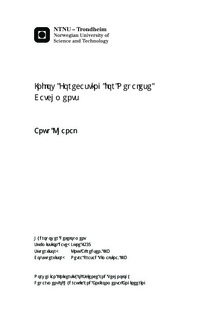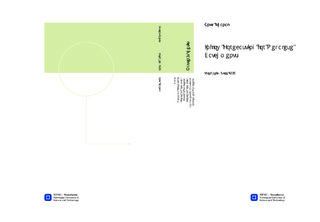| dc.contributor.advisor | Alfredsen, Knut | nb_NO |
| dc.contributor.advisor | Timalsina, Netra Prasad | nb_NO |
| dc.contributor.author | Khanal, Anup | nb_NO |
| dc.date.accessioned | 2014-12-19T12:32:53Z | |
| dc.date.available | 2014-12-19T12:32:53Z | |
| dc.date.created | 2013-10-01 | nb_NO |
| dc.date.issued | 2013 | nb_NO |
| dc.identifier | 652816 | nb_NO |
| dc.identifier | ntnudaim:9016 | nb_NO |
| dc.identifier.uri | http://hdl.handle.net/11250/242431 | |
| dc.description.abstract | Due to the tropical climate, Nepalese rivers experience the large floods during monsoon season. Prediction of flood in advance is very essential not only for the successful hydropower operation but also for establishing effective flood warning system. Though developed country like Norway has been using inflow forecasting as a part of reservoir operation and flood warning system since long ago, so far no study related to inflow forecasting has been carried out in Nepal. This study is the first initiation of work in the field of inflow forecasting for Nepalese catchment. It attempts to establish the inflow forecasting system to the Kulekhani reservoir, employ the forecasted inflow in reservoir operation and present an example of flood warning system.The outputs of the Global Forecast System (GFS) model which is run in spatial resolution of approximately 50km x 50km and temporal resolution of 3 hrs were selected as meteorological forecasts to carry out the inflow forecast simulation. The spatial resolution of GFS model is on the range of Regional Circulation Model (RCM) so no further downscaling was done but modeled data were subjected to bias correction after comparing it to observed data. Two advanced methods of bias correction viz. empirical adjustment method and statistical bias correction method were applied to the precipitation and temperature forecasts. The empirical adjustment method did not perform very well in bias correction of precipitation forecasts as it requires long series of observational and forecast data. So the statistical method was applied for the bias correction of precipitation forecasts. But in the case of bias correction of temperature forecasts, the empirical adjustment method was found satisfactory. Due to difficulty in getting real time meteorological data of Kulekhani catchment from Trondheim, a historical period was chosen for the HBV model setup and inflow forecast simulation. The model calibration was done based on the observed hydrometerological data and the best value of goodness of fit as described by R2 was found to be 0.76. This low value of R2 is characterized by the uncertainties in observed inflow since observed inflow was calculated indirectly based on the daily energy production and reservoir level. The model was updated by adjusting values in precipitation and temperature, and model state variables. Then the forecast simulation was run on 8 consecutive days. Large degree of uncertainty was found in inflow forecast due to use of meteorological forecasts produced in coarser spatial resolution and unavailability of measured inflow during HBV model calibration. The inflow forecast was further used in existing reservoir operational model to examine whether Kulekhani project can meet the energy demand or not in relation with forecasted inflow up to 7 days in advance. The forecasted inflow was also analyzed in terms of flood forecast to set up an effective flood warning system. In conclusion, this study has been successful to carry out inflow forecasting based on meteorological forecasts. However, large degree of uncertainty in inflow forecasting is observed. The reservoir operation and flood warnings are also affected by the uncertainty seen in inflow forecasting. Improvements on this study can be made by using meteorological forecasts with finer spatial resolution and carrying out calibration of the HBV model with measured inflow for sufficiently long period. | nb_NO |
| dc.language | eng | nb_NO |
| dc.publisher | Institutt for vann- og miljøteknikk | nb_NO |
| dc.title | Inflow Forecasting for Nepalese Catchments | nb_NO |
| dc.type | Master thesis | nb_NO |
| dc.source.pagenumber | 105 | nb_NO |
| dc.contributor.department | Norges teknisk-naturvitenskapelige universitet, Fakultet for ingeniørvitenskap og teknologi, Institutt for vann- og miljøteknikk | nb_NO |

